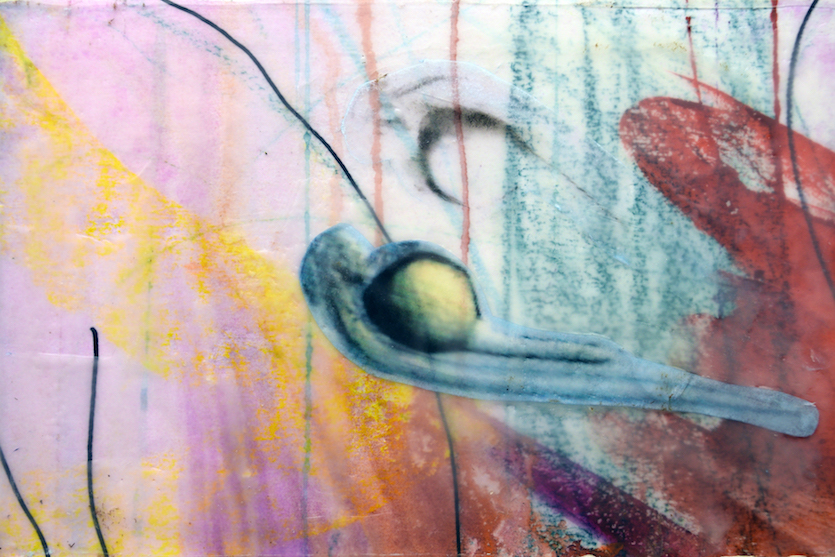Idaho State University biomedical research students participate in summer INBRE program, take classes in arts to help with communication
September 6, 2016

POCATELLO – Idaho State University undergraduate students participating in the National Institutes of Health funded IDeA Network of Biomedical Research Excellence (INBRE) program this summer had the opportunity to take immersive art classes guided by ISU faculty.
The students will display their art projects and scientific research posters in the ISU’s Transition Gallery from Sept. 6 to Sept. 25.
The classes were designed to give students a new way to look at their scientific research and to help better communicate their research to the public.
Students from ISU, University of Idaho and Northwest Nazarene spent 10 weeks working in labs in the departments of biology, psychology and chemistry doing biomolecular and health related research. They worked with a faculty research advisor who assigned the student a project as a part of a larger project in the lab. The students conducted experiments, collected data and put together a presentation for a regional conference. Their research contributes to publications that come from their professor’s lab. Michael Thomas, director of the ISU INBRE project, said that students tend to live in the labs they are working in, putting in up to 80 hours a week.
Thomas said for the last 10 years, he has found that INBRE students benefit from practicing different ways of communicating their research to people who aren’t as familiar with science. This year he worked with art professor Laura Ahola-Young and Thom Hasenpflug, co-director of the School of Performing Arts, to help students effectively and concisely communicate to broad audiences on why their research is important. They decided to have the students participate in either painting, ceramics, poetry or experimental music in order to create a project that encapsulates their work as a scientist.
“We asked them to step back and look at their project from a different perspective and then communicate on why it’s important, interesting, significant and innovative to the world in a language that they have never used before,” Thomas said. “Both their research and their art projects would help them become better scientists and have the ability to approach scientific problems from a new perspective.
Derek Viall, a senior at ISU, is studying biology and psychology and participated in INBRE. His research focused on locomotor behavior in rats in psychology professor Michele Brumely’s Developmental Behavioral Neuroscience lab. He was also in the pottery group. For his art project, he wanted to make clay spinal cross-sections that showed the spinal circuitry that developed in the spinal cord. He said the pottery class helped him step away from the rules and boundaries that come with scientific research.
“I think the greatest thing I took away from pottery was that it helped me rediscover the joys of the abstract,” Viall said. “I don't know if it had a direct influence on my research, but I think it will have an influence on how I approach future research projects in my life.”
The students presented their work at the State INBRE conference at the University of Idaho in August. There were 200 students who are doing biomolecular research who were also presenting their posters. Thomas said ISU’s students were the only ones who had art work with their poster, and they got a lot of attention from people who wanted to see what they were doing as well as hearing about their research.
Thomas said he was pleased with how well the students did and hopes to continue to provide students with art experiences in the future.
“I think it made them better scientists and better at communicating what they were doing,” he said. “Their art projects were what they talked about the most. They loved being able to get away and do something completely different.”
The goals of INBRE are to tap into underrepresented groups who may not be aware of career options in biomedical research, and to create a pipeline for people in these groups, increase research activity in places where not a lot of biomedical research goes on and give faculty the time and expertise to conduct their own research. The INBRE program is supported by the NIH. Idaho’s INBRE program is administered by the University of Idaho.
“INBRE is a wonderful program,” said Brumley. “For students to have this immersive experience in biomedical science is great. Even though they might be part of a bigger project, they get to see the full range of scientific process and explore different things in the lab.”
The students will display their art projects and scientific research posters in the ISU’s Transition Gallery from Sept. 6 to Sept. 25.
Categories:
